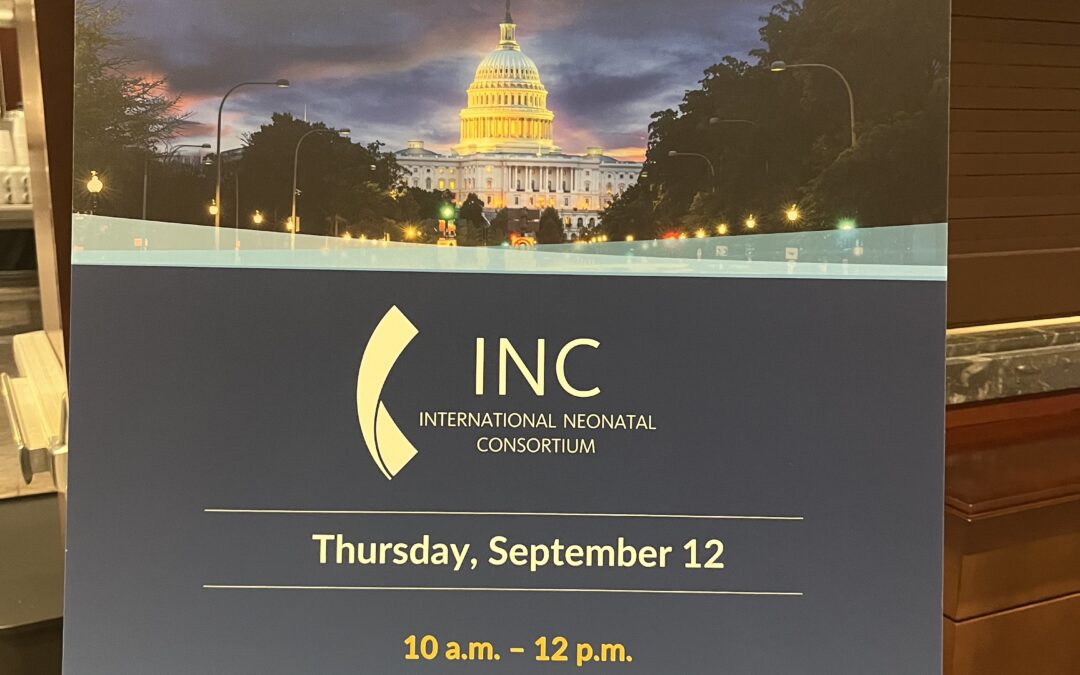Last week, the Critical Path Institute (C-Path) hosted the inaugural Global Impact Conference, at the Washington Marriott at Metro Center in Washington, D.C. This landmark event brought together more than 300 industry leaders, regulatory agencies, academic experts, and patient advocacy groups, all dedicated to advancing drug development and regulatory science for rare diseases.
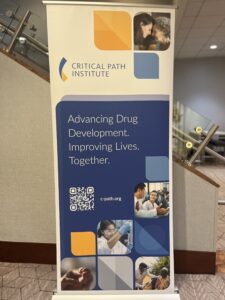
The conference opened with remarks from C-Path CEO Klaus Romero, M.D., M.S., FCP. Dr. Romero outlined the importance of the conference and its pivotal role in shaping the future of healthcare through impactful collaboration. C-Path was also honored to have FDA Commissioner Robert Califf, M.D., MACC, participate in a panel during the opening session, where he emphasized the importance of collaborative efforts to tackle the complexities of drug development. Day two centered on ‘The Power of Every Precious Data Point in Rare and Orphan Diseases,’ emphasizing the transformative role of data in the treatment of rare and orphan diseases. The discussions throughout the day highlighted this theme, featuring compelling remarks by former NFL player and ALS advocate Steve Gleason.
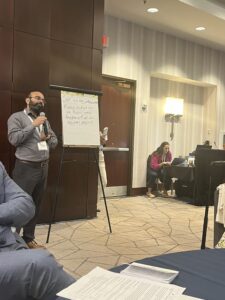
(Kanwaljit Singh)
Day three was focused on the International Neonatal Consortium. More on this later on 🙂
For those who are not familiar with Critical Path, C-Path is a global nonprofit organization that forms collaborative work groups, comprised of diverse stakeholders to identify specific barriers to developing safe and effective therapies for a given disease, and then creates tools and solutions that help drug developers overcome those barriers.
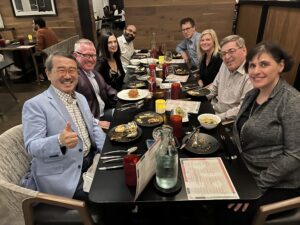
(Our small group dinner on the eve of the INC meeting)
Underneath the umbrella of C-Path is the International Neonatal Consortium (INC), of which I have been a member since its inception in 2015. I currently sit on their Leadership Team, among several other experts in their prospective stakeholder groups (physicians, nurses, researchers, etc.), where I am one of our two NICU parent leaders.
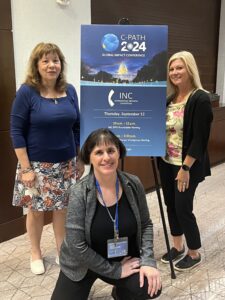
(Me, Mary Short, Deb Discenza)
The International Neonatal Consortium is a global collaboration formed to forge a predictable regulatory path for advancing the safety and effectiveness of therapies for neonates across the world. We have led the development of papers published in medical journals, led inclusive projects designed to pull key messages from other INC papers so that each of our stakeholder groups is aware of how our research benefits them and their members, and more…

Now back to day three, the only day that I was able to attend in person. The day began with my opening remarks, where I shared my personal journey with Bronchopulmonary Dysplasia. Our story includes how Joy’s extremely early birth at 23 weeks gestation changed the entire course of our lives. To summarize a very long journey that we are still on today, Joy was born at 575 grams (1 pound, 4 oz) and spent 121 days in the Neonatal Intensive Care Unit (NICU), fighting for her life for much of that time. Joy suffered many of the medical complications you would expect a micro preemie to endure and still lives with Bronchopulmonary Dysplasia. Joy had pneumonia several times as a baby after discharge through her toddler years, each time resulting in rehospiptalization and the need to be put back on oxygen. A few of these times were very serious and she almost lost her life.
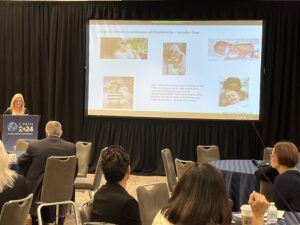
Bronchopulmonary Dysplasia is a serious lung condition that affects premature newborns. Babies are not born with BPD. Instead, they develop it as a complication of another breathing condition called Respiratory Distress Syndrome (RDS). However, other types of newborn breathing conditions, infections, and lung injuries from treatments like mechanical ventilation can also lead to BPD. An estimated 10,000 to 15,000 babies in the United States develop BPD each year. Depending on the severity of BPD, lifelong breathing problems are possible. BPD develops because babies born too early have lungs that are not fully developed and are at risk of damage and swelling. Premature babies often need oxygen and/or other types of breathing support, such as ventilators, which can cause damage such as scarring. Some babies may get infections such as pneumonia, which can worsen swelling as well. The blood vessels in the lungs may also be underdeveloped, which can cause issues with the heart. All of these things can lead to BPD. Children and adults that had BPD as babies may have reduced lung function. This can cause symptoms like wheezing and shortness of breath that can make activities, like exercise, difficult. My daughter Joy is unable to participate in endurance activities and still takes a very long time to get over respiratory viruses, making COVID, Respiratory Syncytial Virus (RSV), Influenza, and even a “common cold” (which can be any virus) very dangerous for her to this day, at twelve years old.
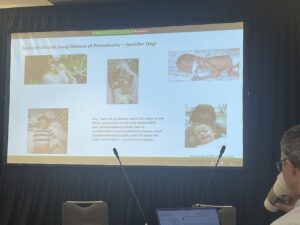
It was an honor to open the day with my presentation on why our physicians, researchers and regulators need to prioritize the work being done to create more effective treatments for BPD. The purpose of the session was to being these multistakeholders together to address the unmet drug development needs for BPD by fostering dialogue and collaboration between our industry members, academic researchers, parents, and regulatory agencies, including the Federal Drug Administration (FDA) and the European Medicines Agency (EMA).
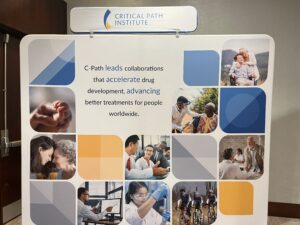
Soon after my presentation we all moved into three breakout groups, each with a different topic of conversation providing platforms for our attendees to collaboratively address the challenges in successful drug development for BPD. These sessions included 1) Patient enrichment strategies and early identification of BPD 2) Development, validation, and optimization of endpoints and outcome measures and 3) Leveraging real world data and quantitative drug development tools to support patient enrichment, endpoint validation and trial optimization. I worked in Group 2, alongside my dear friend and fellow NICU parent leader Deb Discenza of Preemie World. Our group had very meaningful discussions, as did the others which was evident by the summary given by each group leader at the end of our round table discussions. All groups created a list of “call to action” items and recommendations on the path to progress in drug development for BPD.
Following a lunch break, the next session was “INC Cell and Gene Therapy” working group meeting, which was designed to foster a progressive, interdisciplinary partnership with C-Path consortia members to optimize regenerative therapy development for neonatal and pediatric populations. These round table breakout groups included 1) FDA LTFU guidance document review 2) Patient retention and compliance and 3) Monitoring for long-term safety. I participated in the discussions in group two, as a NICU parent expert. Just as our first breakout sessions were run, this one concluded in much of the same way, with one person reporting our conversation summaries and action items to the larger group.
I am sure I missed the opportunity to share some of the other highlights and presentations that occurred during both the two-day Critical Path meeting and the one-day INC meeting, but as I mentioned earlier, I was only able to attend one full day of the meeting due to my teaching obligations. Nevertheless, I am very happy to have attended, and honored to have been chosen to open the Bronchopulmonary Dysplasia session.
I want to take a moment to thank Deb Discenza (Preemie World) for being my forever ally in the fight to share our NICU parent and family lived experiences with all stakeholders in the neonatal space. I also want to thank our C-Path and INC member organizations whose contributions allow us to do our work and improve health care outcomes for all patients and families, including the US Food and Drug Administration, European Medicines Agency, Health Canada, Chiesi, Takeda, Lilly, Pfizer, Novartis, Sanofi, Bayer, Johnson & Johnson, and others. For a complete list, please click HERE.
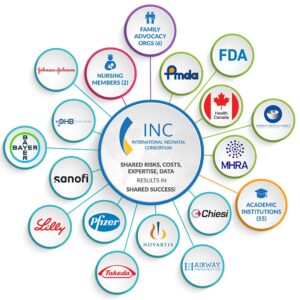
This conference is only a snapshot of the innovative work being done by Critical Path to facilitate scientific and regulatory pathways that accelerate the development of therapies for all people with unmet medical needs, including the work done by the International Neonatal Consortium (INC) to to forge a predictable regulatory path for advancing the safety and effectiveness of therapies for neonates across the world.
I’m incredibly happy to be a member of C-Path and of the INC’s Leadership Team as I do what I can to further their cause. Our goals are one in the same.
Thank you to all of you who took the time to read this lengthy post. Please connect with me if you have any questions regarding this work or if you want to get involved.


